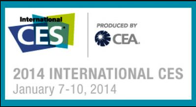ICE & Smartphones, How Smart is Your App?
Time makes fools of many of us, but fortunately I seem to have come away on this particular occasion relatively unscathed. I said in my first ever TA article that the major ICE manufacturers were getting their heads around smartphone connectivity in a number of ways. JVC/Kenwood, Alpine & Sony all have at least one MirrorLink deck in the line-up but ML hasn’t exactly been the blinding success they hoped it would be. Pioneer have put significantly more work in themselves, with AppRadio and it’s a cross platform solution but even they have caved to MirrorLink with their latest hardware. Clarion have finally released units in the UK with their ‘˜Smart Access’ technology which reformats certain apps for driving use.
In short, the market as it stands at the moment is a bit of a mess. There’s a bit of a game changer lurking just around the corner. iOS in the car (apparently, there’s very little information available at the moment) is system-level integration of key iOS functions and applications. So with CES just around the corner, lets take a good look at these competing standards and see what compelling reasons they offer to forsake the phone bracket stuck to the window.
MirrorLink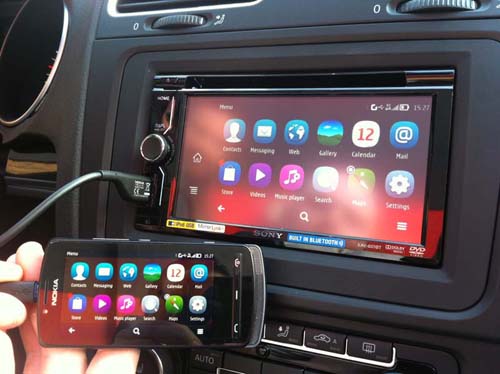
PROS
It’s a proper open standard
Wide selection of manufacturers producing devices
Cheapest option
CONS
‘˜Packetised’ video gives slight quality reduction
Very limited number of apps supported
Limited selection of phone manufacturers
MirrorLink (originally called Terminal Mode and developed by Nokia) was a bold, forward-looking attempt to establish an ‘˜open protocol’ to enable consumers to get their smartphone apps on a good sized in-car screen. Problem was, it came at a time of great turbulence for Nokia, during which they only survived by metaphorically cutting off their own arm and going for Windows Phone.
Ironically, Nokia’s current Lumia range of smartphones don’t even support MirrorLink! But older Symbian devices do, along with Android devices from Samsung and Sony and it’s had a couple of years to mature now. Plug your compatible phone in, run the app and the dream is looking pretty well realised.
The Achilles heel of MirrorLink is the very short list of approved apps that can be run by default you’re usually limited to the stock music, maps/navigation and maybe internet radio if you’re lucky. If you’ve got a favourite nav app that you’ve shelled out good money for, tough. The image quality also suffers a little bit because it doesn’t require the phone to have a video out, it ‘˜packetises’ (compresses) the video and sends it via USB. It’s not horrendous but it is noticeable think of one of the lower bitrate FreeView channels. The biggest plus is you can choose from a number of decks from Sony, JVC, Kenwood and Pioneer. Some car manufacturers have even incorporated it into their OEM systems.
Pioneer AppRadio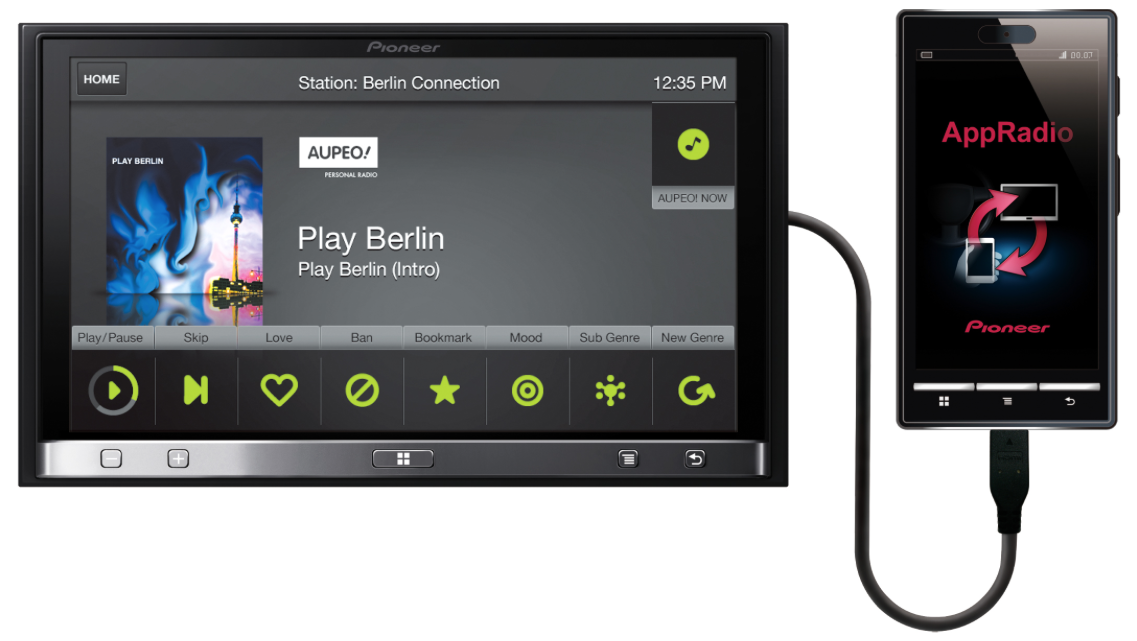
Pros
iOS and Android compatible
Under continuous development by Pioneer
Wide selection of compatible phones devices
Direct video connection gives great quality
Possibility of hacking
Cons
Tied to Pioneer
Limited selection of apps
Some issues with updates
We’re big fans of Pioneer here at TalkAudio they make great products and really know their stuff. When MirrorLink was being developed they obviously took the decision to be masters of their own destiny and boldly developed their own connected smartphone platform called AppRadio. This revolves around a central app on your phone that provides connectivity to the deck and lets curated apps run.
This is probably the biggest weakness with AppRadio (that it shares with MirrorLink) you’re again stuck with a limited selection of apps. Pioneer take driver responsibility very seriously and they have to ensure you’re not going to try to update your Facebook at 70mph. But there’s a certain degree of cynicism in not allowing you to use the satnav app you’ve paid for just because they’re not a Pioneer partner. (Pioneer do offer a full fat sat nav app of their own and the development of compatibility with other ones is a simple branding rather than a cynicism issue, Simon? Only they offer a ‘˜total’ solution and since the days of Centrate have always been keen on full-Pioneer-all-through systems.. I am less likely to call that cynicism so much as corporate culture. Just my opinionof course.. Ed, Chipping in with the uncouth privilege of being able to!) There’s also the question of updates as new decks have been released, software updates for the ‘˜quirks’ of the previous model have been conspicuous by their absence. Smartphone consumers expect regular updates for bugs and even functionality improvements. That being said, Pioneer went to great lengths to offer connectivity solutions when the iPhone 5 was released with its new ‘˜Lightning’ connector.
THE FOLLOWING IS FOR GEEKS ONLYwith an absolute assurance that you will be setting sail into a zone of utter warranty-and-all-support voiding-behaviour. And that the LAW requires you to pay due care and attention to your driving at all times.
I’ll mention in passing that for the exceptionally geeky amongst us, AppRadio can be ‘˜hacked’ to offer full phone mirroring. I’ll say no more but Google it and look at the instructions. If you find them totally baffling, it’s not for you.
Clarion Smart Access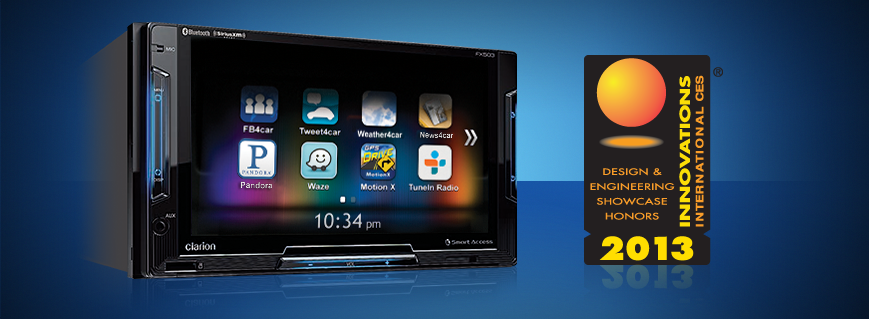
PROS
Emphasis on text to speech
CONS
Tied to Clarion
New kid on the block
Only on a deck that already offers Nav?
To me, Smart Access is the wildcard of the bunch. Released with much fanfare in the US and none whatsoever in the UK, it’s the only technology I’ve had no hands on with. But again, there’s a curated list of apps and both Android and iOS are supported. Launching several years behind Pioneer using a very similar strategy doesn’t make a lot of sense Pioneer have presumably tied up a lot of exclusive deals with app manufacturers. The other drawback is cost the number one reason to hook your smartphone up is to get navigation without shelling out for an expensive nav unit. The first unit out the door in the UK offers Smart Access in addition to onboard nav, which seems more than a little odd.
iOS In the Car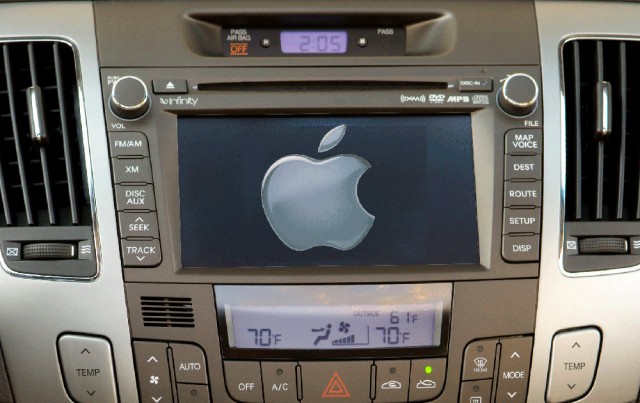
PROS
System level integration
Potentially high level of app availability
CONS
Nothing for the Android crowd
Unproven
Apple does business one way, and one way only they watch the market while other people innovate with expensive, quirky and sometimes downright unfinished products and then they come along with their own more polished, easier to use and reasonably priced version and they sell them by the bucketload. All in one computers? Check. Touch-screen phones? You betcha! Tablet computers? Those too. And it looks like they’re about to apply their smarts to the blower-jalopy link. There’s been almost no information released about iOS In the Car the few slides we’ve seen, showed a slick interface but talked exclusively about car manufacturers. No mention was made of any of our favourite aftermarket brands.
With iOS In the Car being supported at the system level, Apple have the opportunity to get the kind of traction that the other platforms can only dream about. If it’s a simple system level function for programmers to turn on (or offer as an chargeable in-app upgrade), just about every satnav, media player and internet radio app is going to be wanting a slice of the pie. I’m desperately hoping CES reveals that some if not all of the usual suspects have been secretly working on prototypes and will be releasing compatible products by Q2 2014. If so, it’s going to make a lot of Android users (myself included!) more than a little jealous. Unless Google offers a similar option it would be down to the device manufacturers to open up their own protocols to make them as attractive as Apple’s option has the potential to be.
It’s worth pointing out another unit that’s on the market at the moment that gives a ‘˜smartphone in the car’ kind of experience but doesn’t actually require a smartphone all it needs is an internet connection. The Kenwood DNN9230DAB is a truly phenomenal piece of kit that goes about offering a ‘˜connected experience’ by putting all of the smarts in the head unit itself. There’s basically a decent Android smartphone in there running a very heavily skinned version of Android so even if you’ve got a budget phone you can get a premium experience. It focuses heavily on text-to-speech and speech-to-text so you’re eyes are always focused on the road.
The problem with this is price you’re looking at a street price of a grand (firmly in high-end territory) but it is a true vehicle ‘˜hub’ that even serves up content to tablet-toting passengers.
WRAP UP
In the last eight years, the smartphone has developed from an object of tech desire to everyone’s everyday companion, whether for business, social networking or gaming. There’s a huge opportunity for the ICE manufacturers to ‘˜enable’ this experience behind the wheel but so far what they’ve offered hasn’t exactly set the world on fire. Apple are about to have their swing at it but they’re not perfect and have made a few high profile mistakes in the last few years. Whether they’ll succeed or not is for me 2014’s big ICE question. Roll on CES!
And Adam Rayner, editor, is the lucky stiff going along as a guest directly of the organisers, the Consumer Electronics Association of America, the CEA! Talk Audio is deeply honoured (or aught that be ‘˜honored’ as it American?) to be so exalted and while I could really use Mr. King as reporter by my side or rather running around like a nutter like me… the CEA can only take one bod per publication. I have been grooming the poor man for years and this article may just help for next year! I certainly feel better-informed myself. Thanks for a great article Simon and the wicked lead for the show. Adze.

